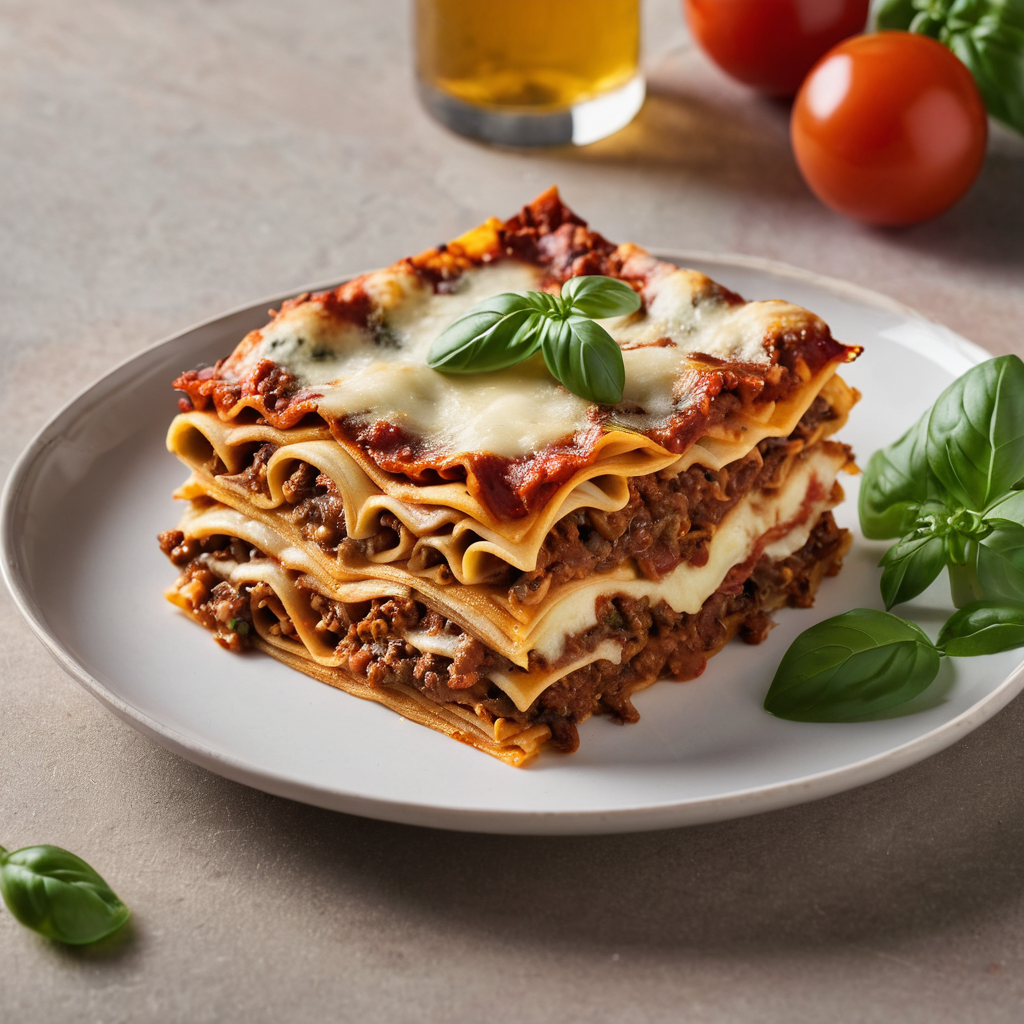A Classic Italian Dish with Layers of Flavor
Lasagna is a classic Italian dish that has been enjoyed for centuries. It is a hearty and flavorful meal that is perfect for feeding a crowd or enjoying as leftovers. Lasagna is made up of layers of pasta, cheese, and a rich tomato sauce. The dish is then baked until the cheese is melted and bubbly.

Making lasagna from scratch can seem daunting, but it is actually quite simple. The key is to take your time and prepare each component of the dish with care. Start by making a homemade tomato sauce using fresh tomatoes, garlic, and herbs. Then, cook the lasagna noodles until they are al dente. Finally, assemble the lasagna by layering the noodles with the tomato sauce and a mixture of ricotta, mozzarella, and Parmesan cheese.
Whether you are a seasoned cook or a beginner in the kitchen, lasagna is a delicious and satisfying meal that is sure to impress. With a little bit of patience and some quality ingredients, you can create a homemade lasagna that rivals any restaurant version. So, roll up your sleeves and get ready to dig into a piping hot dish of lasagna.
History of Lasagna

Lasagna is a classic Italian dish that has been enjoyed for centuries. In this section, we will explore the origins and evolution of lasagna, as well as its regional variations.
Origins and Evolution
The exact origin of lasagna is unclear, but it is believed to have originated in ancient Rome. The Romans used the term “lagana” to describe thin sheets of pasta made from a mixture of wheat and flour. These sheets were cut into square or rectangular shapes and baked or fire-cooked.
Over time, lasagna evolved and became a popular dish throughout Italy. In the 14th century, the first known recipe for lasagna was recorded in the Liber de Coquina, a medieval Italian cookbook. This recipe called for layers of pasta, cheese, and meat sauce.
Regional Variations
Today, there are many regional variations of lasagna throughout Italy. In the north, lasagna is often made with a béchamel sauce and layered with spinach and ricotta cheese. In the south, lasagna is often made with a tomato-based sauce and layered with mozzarella cheese.
One of the most famous variations of lasagna is the lasagna alla Bolognese, which originated in the city of Bologna. This version of lasagna is made with a meat sauce that includes ground beef, pork, and veal, as well as a béchamel sauce and Parmigiano-Reggiano cheese.
Another popular variation is the lasagna al forno, which is a baked lasagna that is made with a tomato-based sauce, mozzarella cheese, and Parmigiano-Reggiano cheese.
In conclusion, lasagna is a classic Italian dish with a rich history and many regional variations. Whether you prefer a traditional lasagna alla Bolognese or a modern twist on this classic dish, there is a lasagna recipe out there for everyone to enjoy.
Ingredients for Classic Lasagna
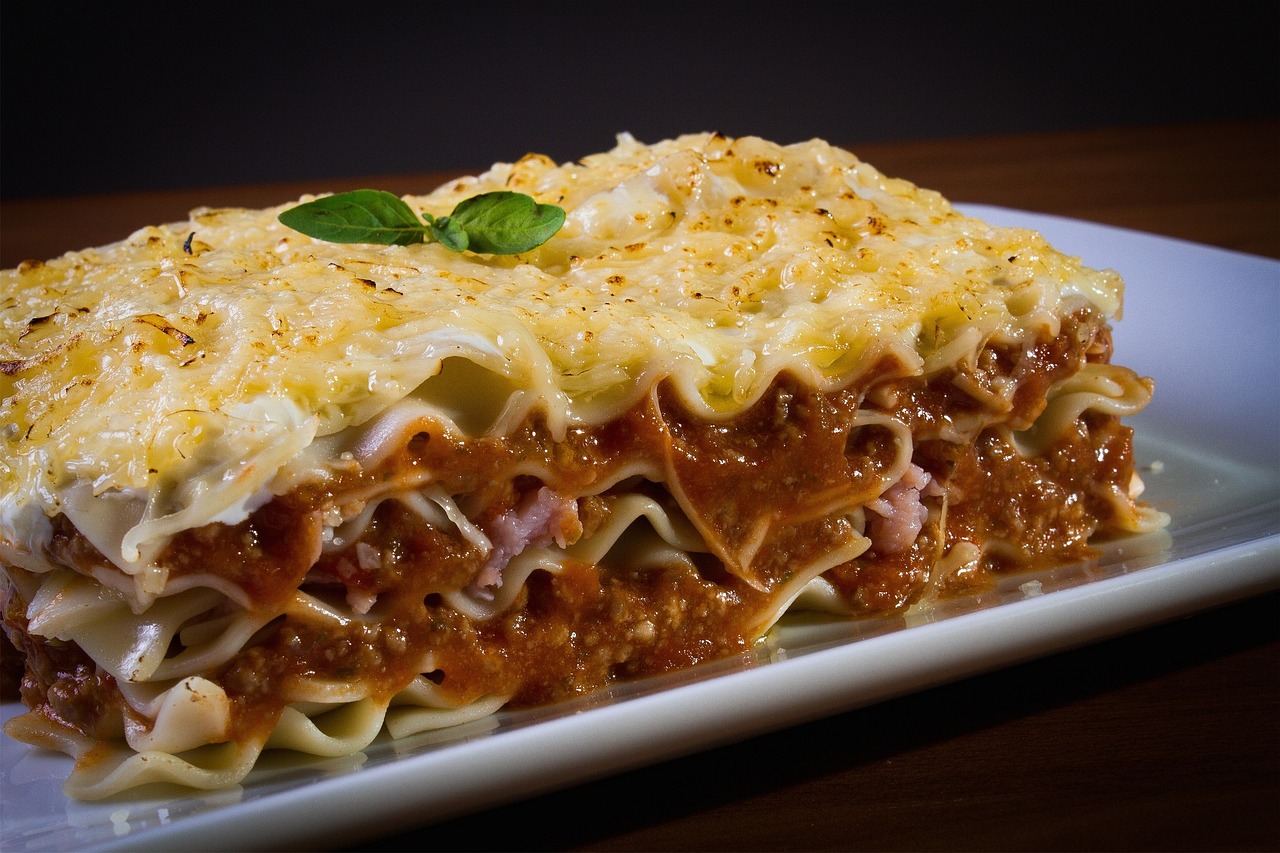
When it comes to classic lasagna, there are three key components that make it a delicious and comforting dish: pasta layers, meat sauce, and cheese varieties. Each of these components is important to achieve the perfect balance of flavors and textures.
Pasta Layers
The pasta layers are the foundation of any lasagna dish. You can either use store-bought lasagna noodles or make your own fresh pasta. If you decide to use store-bought noodles, make sure to choose the ones that are labeled “no-boil” or “oven-ready.” These noodles are designed to cook in the oven, saving you time and effort.
Meat Sauce
The meat sauce is what gives lasagna its hearty and savory flavor. You can use ground beef, ground pork, or a combination of both. To add more depth of flavor, you can also add Italian sausage. In addition to the meat, you will need tomato sauce, canned tomatoes, garlic, onion, and a blend of Italian herbs such as oregano, basil, and thyme.
Cheese Varieties
The cheese varieties are what make lasagna a rich and indulgent dish. The most common cheeses used in lasagna are ricotta, mozzarella, and Parmesan. Ricotta cheese is creamy and mild, while mozzarella cheese is stringy and melty. Parmesan cheese is nutty and salty and adds a sharpness to the dish. You can also use other types of cheese such as provolone or fontina for a more complex flavor.
To assemble the lasagna, you will need to layer the pasta, meat sauce, and cheese varieties in a baking dish. Start with a layer of meat sauce, followed by a layer of pasta, a layer of ricotta cheese, and a layer of mozzarella cheese. Repeat these layers until you reach the top of the dish, making sure to end with a layer of cheese on top.
Overall, the key to making a classic lasagna is to use high-quality ingredients and to layer them in the right order. With a little bit of effort, you can create a delicious and satisfying meal that your whole family will love.
Preparing the Perfect Lasagna

Lasagna is a classic Italian dish that is loved by many. Preparing the perfect lasagna requires a few key techniques and tips to ensure that it is delicious and satisfying.
Layering Techniques
The layering technique is crucial in making a great lasagna. You want to make sure that each layer is evenly distributed and the filling is spread out. Start with a layer of sauce on the bottom of the pan, followed by a layer of noodles. Then add a layer of cheese and meat, followed by another layer of noodles. Repeat this process until you have used all of your ingredients, making sure to end with a layer of sauce and cheese on top.
Baking Tips
Baking is the final step in making the perfect lasagna. To ensure that your lasagna is cooked evenly, cover it with foil before baking at 375 degrees Fahrenheit for an hour. Then remove the foil and bake for an additional 15 minutes so that the cheese on top becomes a delicious golden brown. After removing from the oven, let it sit for 10 minutes before cutting into it; this keeps your layers from immediately sliding apart.
Another tip is to use a lasagna pan that is the right size for your recipe. If your pan is too small, the layers will be too thick and the lasagna will not cook evenly. If your pan is too large, the lasagna will be too thin and dry out.
In conclusion, preparing the perfect lasagna requires attention to detail and a few key techniques. By following these layering techniques and baking tips, you can make a delicious and satisfying lasagna that is sure to impress your guests.
Vegetarian and Vegan Lasagna Variations
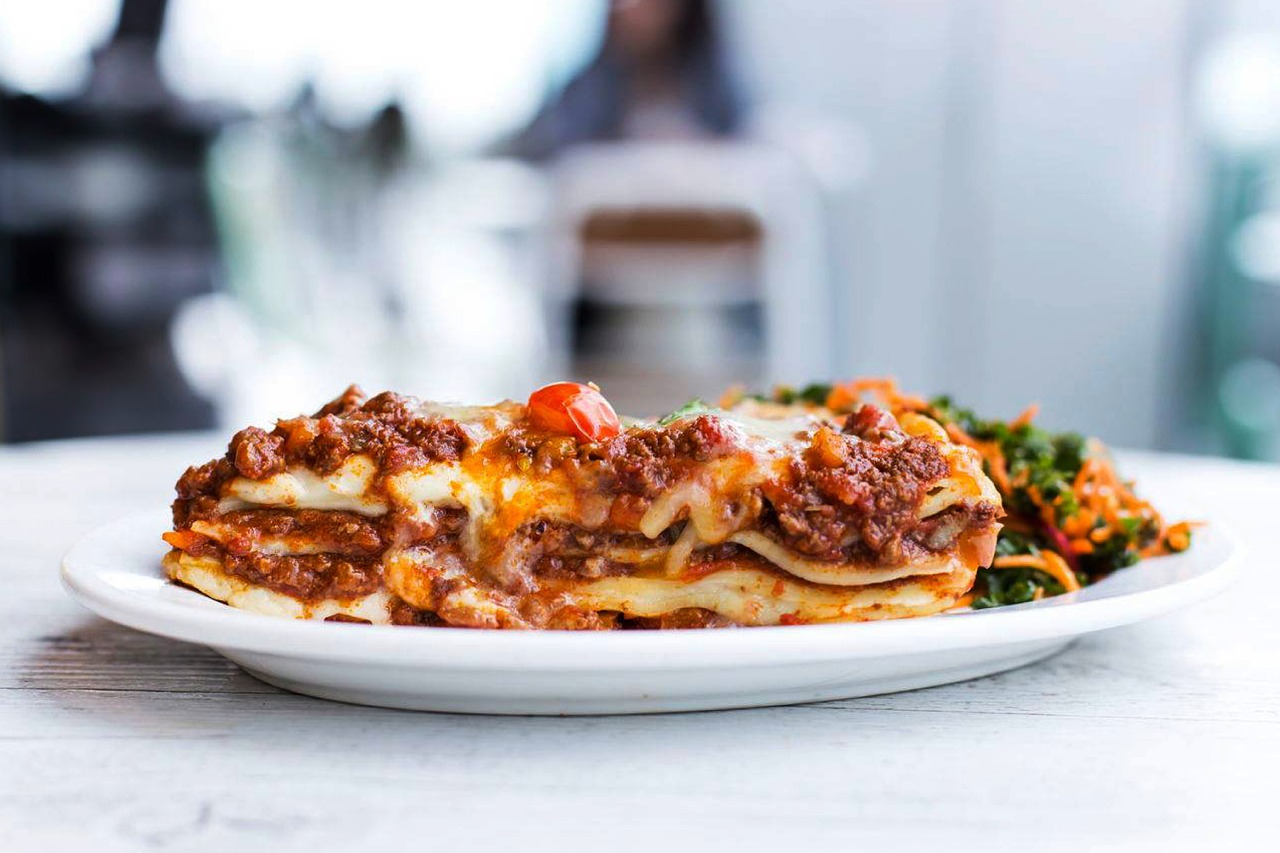
Lasagna is a classic Italian dish that typically contains layers of pasta, meat, cheese, and tomato sauce. However, there are many variations of lasagna that are vegetarian or vegan-friendly.
Substituting Meat Alternatives
If you are a vegetarian or vegan, you can substitute the meat in lasagna with a variety of meat alternatives. Some popular meat substitutes include:
- Tofu: crumble tofu and season it with Italian herbs and spices to create a meaty texture.
- Lentils: cook lentils and mix them with tomato sauce to create a meaty texture.
- Beyond Meat or Impossible Meat: these plant-based meat alternatives are designed to mimic the taste and texture of meat.
Dairy-Free Cheese Options
If you are vegan or lactose intolerant, there are many dairy-free cheese options that you can use in lasagna. Some popular dairy-free cheese options include:
- Cashew cheese: blend cashews with nutritional yeast, garlic, and lemon juice to create a creamy cheese-like sauce.
- Vegan mozzarella: this cheese alternative is made from coconut oil and potato starch and has a similar texture to mozzarella cheese.
- Nutritional yeast: this ingredient has a cheesy flavor and can be sprinkled on top of the lasagna.
In summary, there are many vegetarian and vegan variations of lasagna that are just as delicious as the traditional meat and cheese version. By substituting meat alternatives and dairy-free cheese options, you can create a lasagna that is both healthy and tasty.
Lasagna Pairings and Side Dishes

Lasagna is a classic Italian dish that is loved by many. The rich and savory flavors of the lasagna are best complemented with the right pairings and side dishes. In this section, we will discuss some of the best wine pairings and complementary sides for lasagna.
Wine Pairings
Pairing wine with lasagna is a great way to enhance the flavors of the dish. A full-bodied red wine such as Chianti or Cabernet Sauvignon pairs well with lasagna. The tannins in the wine help cut through the richness of the lasagna and cleanse the palate. If you prefer a white wine, a crisp Pinot Grigio or Sauvignon Blanc can also be a good choice. These wines have a high acidity level that helps balance the richness of the lasagna.
| Wine Type | Best Pairing |
|---|---|
| Red Wine | Chianti, Cabernet Sauvignon |
| White Wine | Pinot Grigio, Sauvignon Blanc |
Complementary Sides
While lasagna is a delicious dish on its own, it can be enhanced with the right sides. A simple green salad with a light vinaigrette dressing can help balance the richness of the lasagna. Roasted vegetables such as zucchini, eggplant, and bell peppers are also great sides that complement the flavors of lasagna.
| Side Dish | Description |
|---|---|
| Green Salad | Light and refreshing, helps balance the richness of lasagna |
| Roasted Vegetables | Adds texture and flavor, great complement to lasagna |
Garlic bread is a classic side dish that pairs well with lasagna. The garlic and butter flavors in the bread complement the savory flavors of the lasagna. Another great option is a side of bruschetta, which is made with fresh tomatoes, basil, and garlic. The fresh and tangy flavors of the bruschetta make it a perfect pairing for lasagna.
| Side Dish | Description |
|---|---|
| Garlic Bread | Classic side dish, garlic and butter flavors complement lasagna |
| Bruschetta | Fresh and tangy flavors, perfect pairing for lasagna |
In conclusion, lasagna is a classic dish that can be enhanced with the right wine pairings and complementary sides. A full-bodied red wine or a crisp white wine can help balance the richness of the lasagna. A simple green salad or roasted vegetables can add texture and flavor to the dish. Garlic bread and bruschetta are classic side dishes that complement the savory flavors of the lasagna.
Storing and Reheating Lasagna
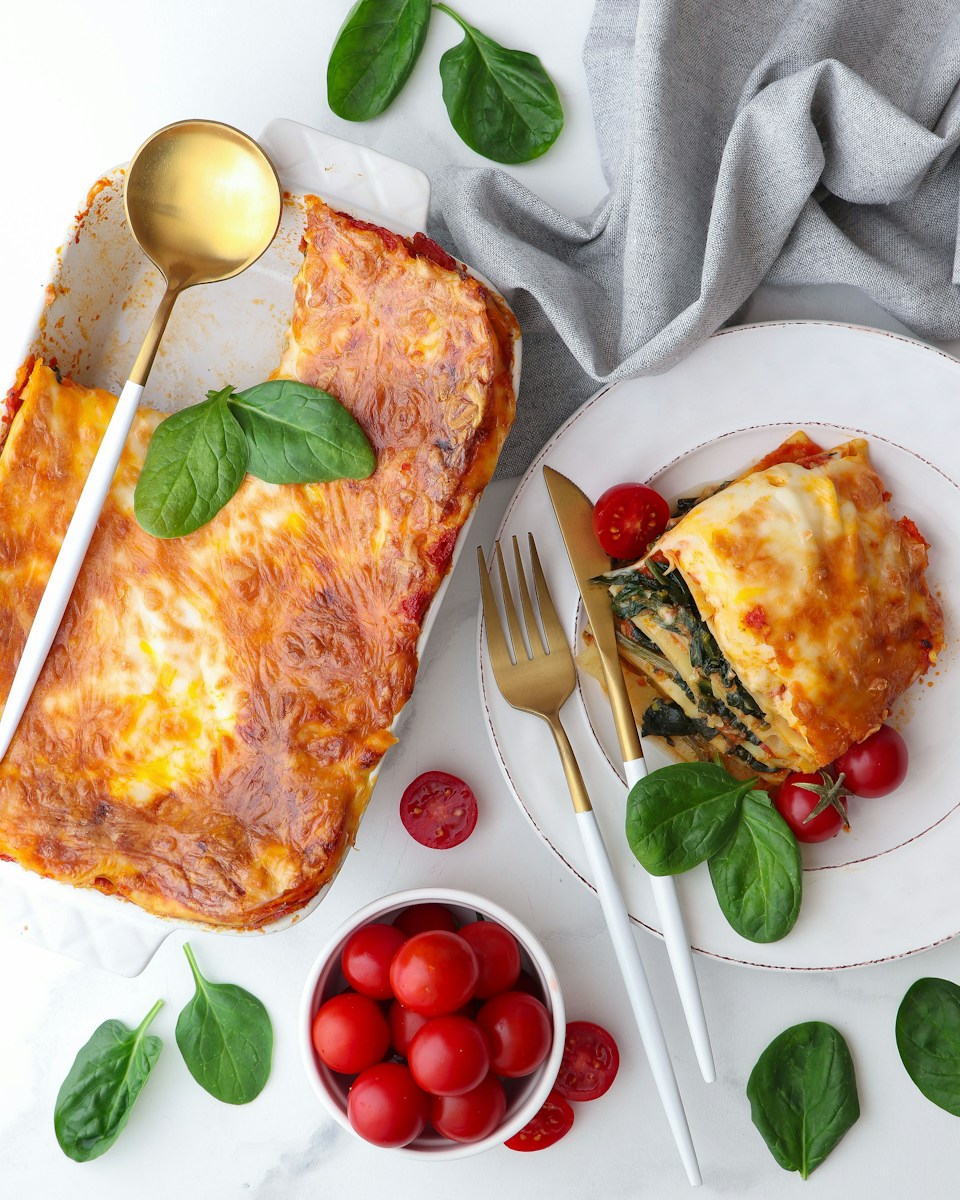
Lasagna is a delicious dish that can be enjoyed for days after it’s made. Proper storage and reheating techniques are crucial to maintaining the flavor and texture of the lasagna.
Refrigeration Best Practices
When storing lasagna in the refrigerator, it is important to follow these best practices to prevent spoilage and maintain quality:
- Allow the lasagna to cool completely before storing it in the refrigerator.
- Store the lasagna in an airtight container or cover it tightly with plastic wrap or aluminum foil.
- Label the container with the date it was made and use it within 3-5 days.
- Store the lasagna on the middle shelf of the refrigerator, where the temperature is most consistent.
Reheating for Optimal Taste
Reheating lasagna can be a bit tricky, as it can easily become dry and overcooked. Here are some tips to help you reheat your lasagna for optimal taste:
- Remove the lasagna from the refrigerator and allow it to come to room temperature for about 30 minutes before reheating.
- Preheat your oven to 350°F.
- Cover the lasagna with aluminum foil and bake it for about 20-30 minutes, or until it is heated through.
- Remove the foil and bake for an additional 5-10 minutes to crisp up the top layer of cheese.
- If you prefer to reheat your lasagna in the microwave, place it in a microwave-safe dish and cover it with a damp paper towel. Microwave on high for 2-3 minutes, or until heated through.
- Stir the lasagna and check the temperature in the center to ensure that it is hot all the way through.
By following these simple tips, you can enjoy delicious and flavorful lasagna for days after it’s made.
Gluten-Free and Low-Carb Lasagna
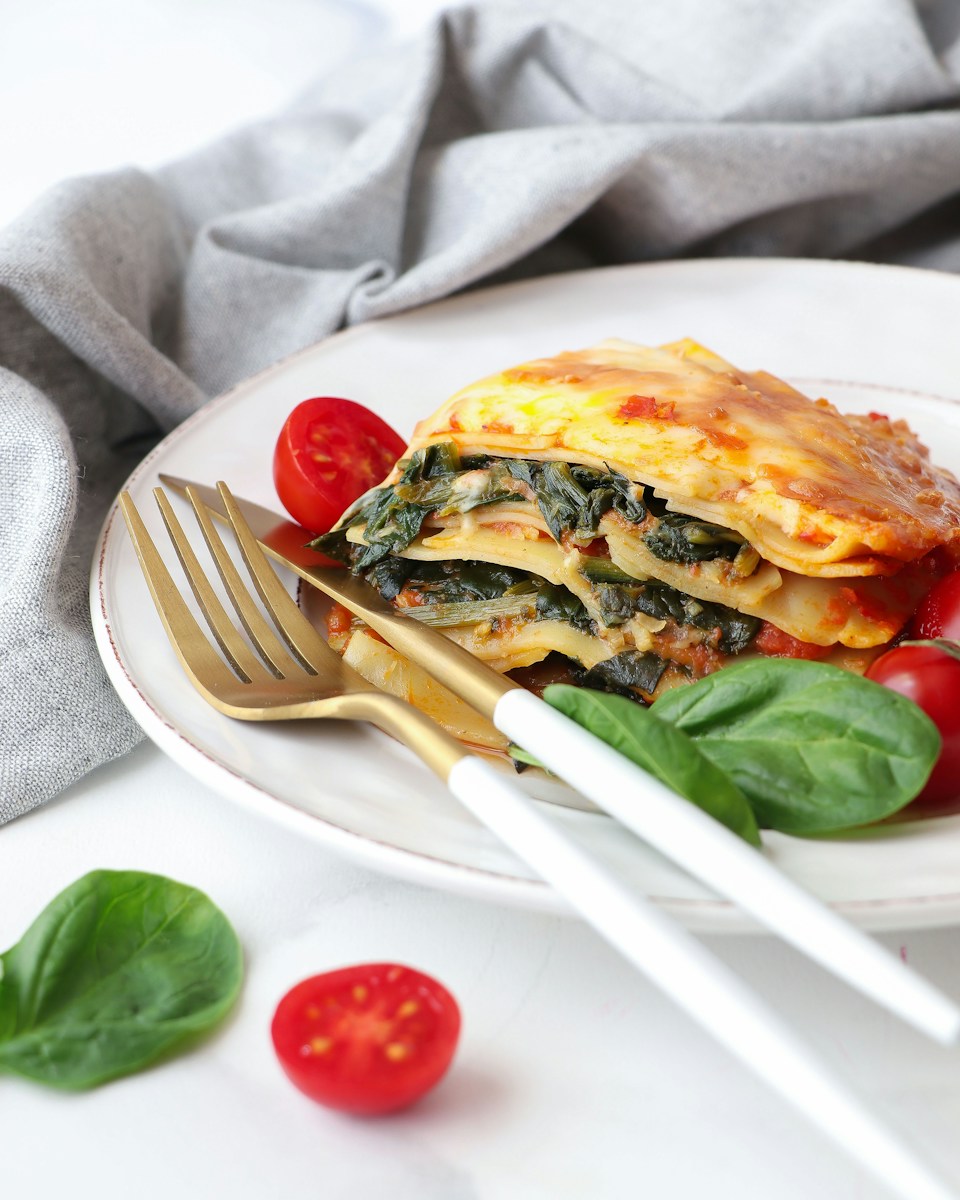
If you’re following a gluten-free or low-carb diet, you might think that lasagna is off the menu. However, with a few ingredient swaps, you can still enjoy this classic Italian dish without sacrificing flavor or texture.
Gluten-Free Pasta Alternatives
Traditional lasagna noodles are made with wheat flour, which contains gluten. Fortunately, there are several gluten-free pasta alternatives that work well in lasagna:
- Brown rice lasagna noodles: Made with brown rice flour, these noodles have a slightly nutty flavor and a chewy texture that’s similar to traditional lasagna noodles.
- Zucchini: Sliced thin and layered in place of pasta, zucchini is a low-carb, nutrient-rich alternative that adds a fresh flavor and texture to lasagna.
- Eggplant: Similar to zucchini, eggplant can be sliced thin and used in place of pasta. It has a slightly sweeter flavor and a meatier texture that pairs well with tomato sauce and cheese.
Low-Carb Ingredient Swaps
In addition to swapping out the pasta, there are several other ingredient swaps you can make to create a low-carb lasagna:
- Ground turkey or chicken: Instead of using ground beef, try using ground turkey or chicken. These leaner meats are lower in fat and calories, making them a healthier option.
- Cottage cheese: Instead of using ricotta cheese, try using cottage cheese. It has a similar texture and flavor, but is lower in fat and calories.
- Almond flour: Instead of using wheat flour to make a roux for the cheese sauce, try using almond flour. It’s lower in carbs and adds a nutty flavor to the sauce.
- Mushrooms: Adding sliced mushrooms to the meat sauce is a great way to add flavor and texture without adding carbs.
By making these simple swaps, you can create a delicious, gluten-free and low-carb lasagna that’s sure to satisfy your cravings.
Lasagna in Popular Culture

Lasagna has become an iconic dish in popular culture, appearing in numerous movies, TV shows, and books. It is often portrayed as a hearty and comforting meal, perfect for family gatherings and special occasions.
One of the most famous references to lasagna in popular culture is in the comic strip Garfield, where the titular character is known for his love of the dish. Garfield famously says, “I hate Mondays” and “I love lasagna.” The comic strip has even inspired a line of frozen lasagna products.
Lasagna has also made appearances in movies such as The Godfather and Eat Pray Love, where it is featured as a staple of Italian cuisine. In The Godfather, the character Clemenza famously teaches Michael Corleone how to make lasagna, and the dish is later served at a family gathering.
In addition to its appearances in popular culture, lasagna has also been the subject of numerous cookbooks and culinary blogs. These resources often provide recipes for traditional lasagna as well as variations on the classic dish, such as vegetarian and gluten-free options.
Overall, lasagna’s popularity in popular culture is a testament to its status as a beloved comfort food that has stood the test of time. Whether enjoyed at a family gathering or in the comfort of your own home, lasagna is a dish that is sure to satisfy.
Lasagna Cooking Techniques and Styles
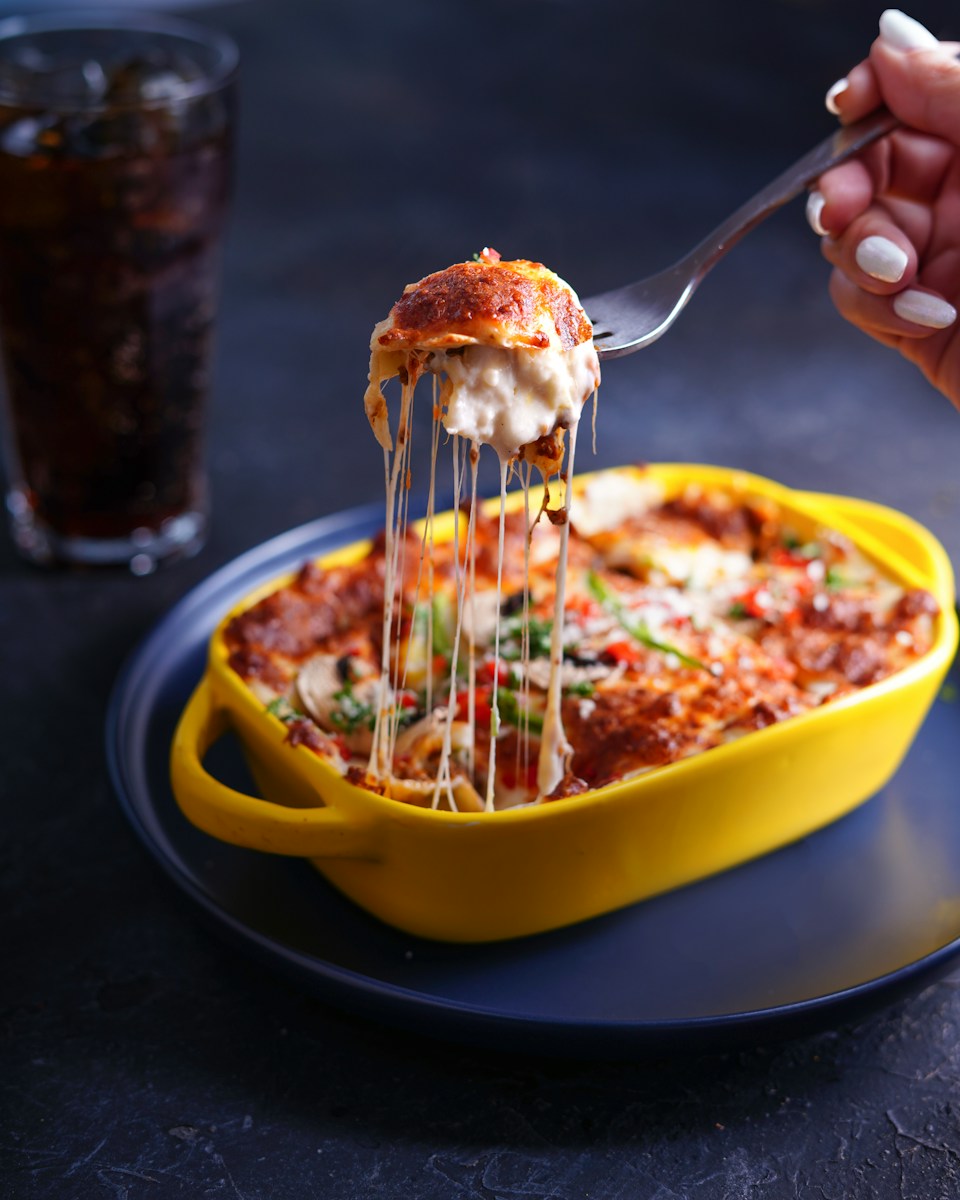
Lasagna is a versatile dish that can be made in many different ways. Here are a few techniques and styles that you can try to create the perfect lasagna.
Skillet Lasagna
Skillet lasagna is a quick and easy way to make lasagna without having to use an oven. To make skillet lasagna, you will need a large skillet with a lid. Here is how you can make skillet lasagna:
- Cook the ground beef in the skillet until it is browned. Drain any excess fat.
- Add the lasagna noodles, tomato sauce, and water to the skillet. Stir to combine.
- Bring the mixture to a boil, then reduce the heat to low. Cover the skillet and let the lasagna simmer for about 20 minutes, or until the noodles are cooked through.
- Remove the lid and sprinkle shredded cheese on top of the lasagna. Cover the skillet again and let the cheese melt.
- Serve the skillet lasagna hot.
Grilled Lasagna
Grilled lasagna is a fun and unique way to cook lasagna. To make grilled lasagna, you will need a grill and a large sheet of heavy-duty aluminum foil. Here is how you can make grilled lasagna:
- Cook the lasagna noodles according to the package directions. Drain the noodles and set them aside.
- In a bowl, mix together the ricotta cheese, shredded mozzarella cheese, and grated Parmesan cheese.
- Cut a large sheet of heavy-duty aluminum foil and place it on a flat surface. Spread a layer of tomato sauce on the foil.
- Lay the lasagna noodles on top of the tomato sauce. Spread a layer of the cheese mixture on top of the noodles.
- Repeat the layers of tomato sauce, noodles, and cheese mixture until you have used all of the ingredients.
- Fold the aluminum foil to enclose the lasagna. Place the foil packet on the grill and cook for about 20 minutes, or until the cheese is melted and bubbly.
- Remove the foil packet from the grill and let it cool for a few minutes before serving.
These are just a few of the many techniques and styles that you can use to make lasagna. Experiment with different ingredients and cooking methods to find the perfect lasagna recipe for you.
Health and Nutrition Facts of Lasagna
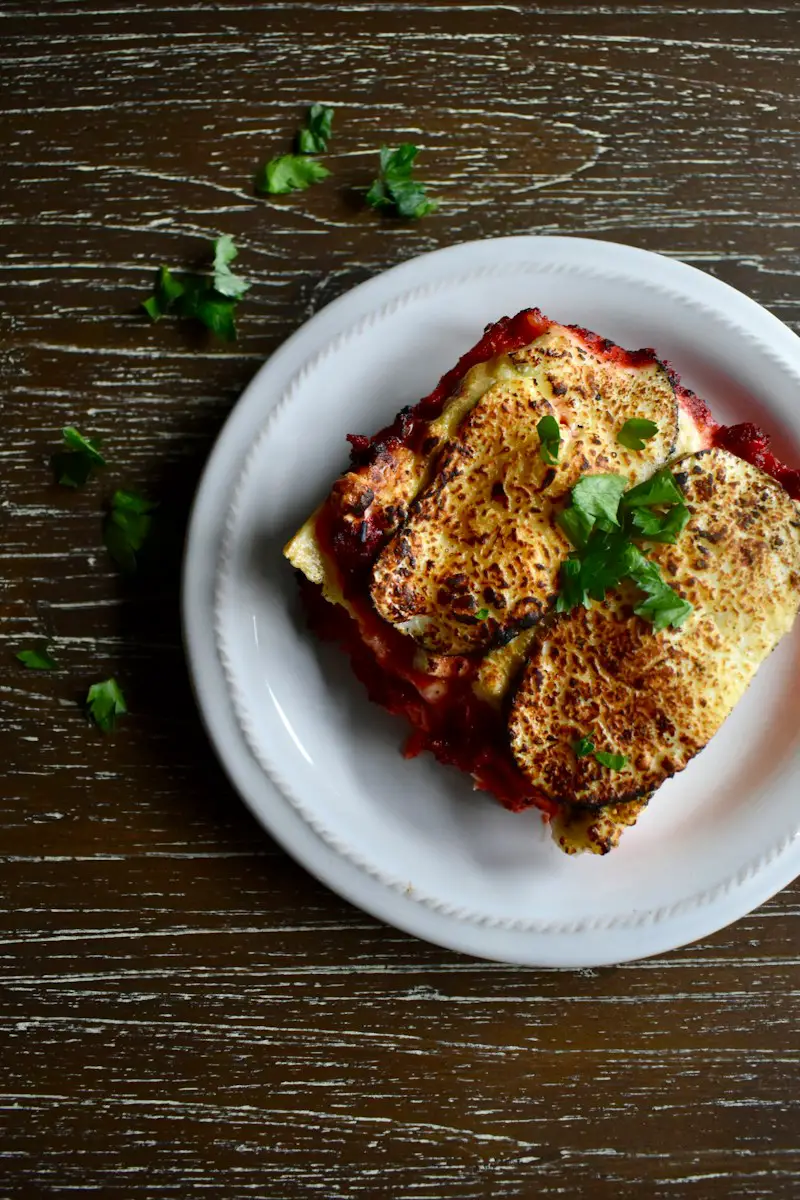
Lasagna is a popular Italian dish that is enjoyed worldwide. It is a layered pasta dish that is typically made with meat, cheese, tomato sauce, and pasta sheets. While lasagna is delicious, it is also important to consider its nutritional value.
Caloric Content
Lasagna is a calorie-dense food due to its high-fat and high-carbohydrate content. A standard serving of lasagna can provide between 300-600 calories, depending on the recipe and serving size. The calorie content of lasagna can be reduced by using leaner meats, less cheese, and more vegetables.
Balanced Diet Considerations
Lasagna can be part of a balanced diet if consumed in moderation and paired with other nutrient-dense foods. It is important to consider the macronutrient and micronutrient content of lasagna when incorporating it into your diet.
Macronutrients
Lasagna is a good source of carbohydrates and protein. However, it is also high in fat, particularly saturated fat. To balance your macronutrient intake, you can pair lasagna with a side salad or roasted vegetables.
Micronutrients
Lasagna is a good source of calcium and iron due to its cheese and meat content. However, it is also high in sodium, which can be detrimental to your health if consumed in excess. To reduce your sodium intake, you can opt for low-sodium tomato sauce and cheese.
In conclusion, lasagna can be a delicious and nutritious addition to your diet if consumed in moderation and paired with other nutrient-dense foods. By making small adjustments to the recipe, such as using leaner meats and less cheese, you can make lasagna a healthier option without sacrificing its flavor.
Lasagna Recipe Resources
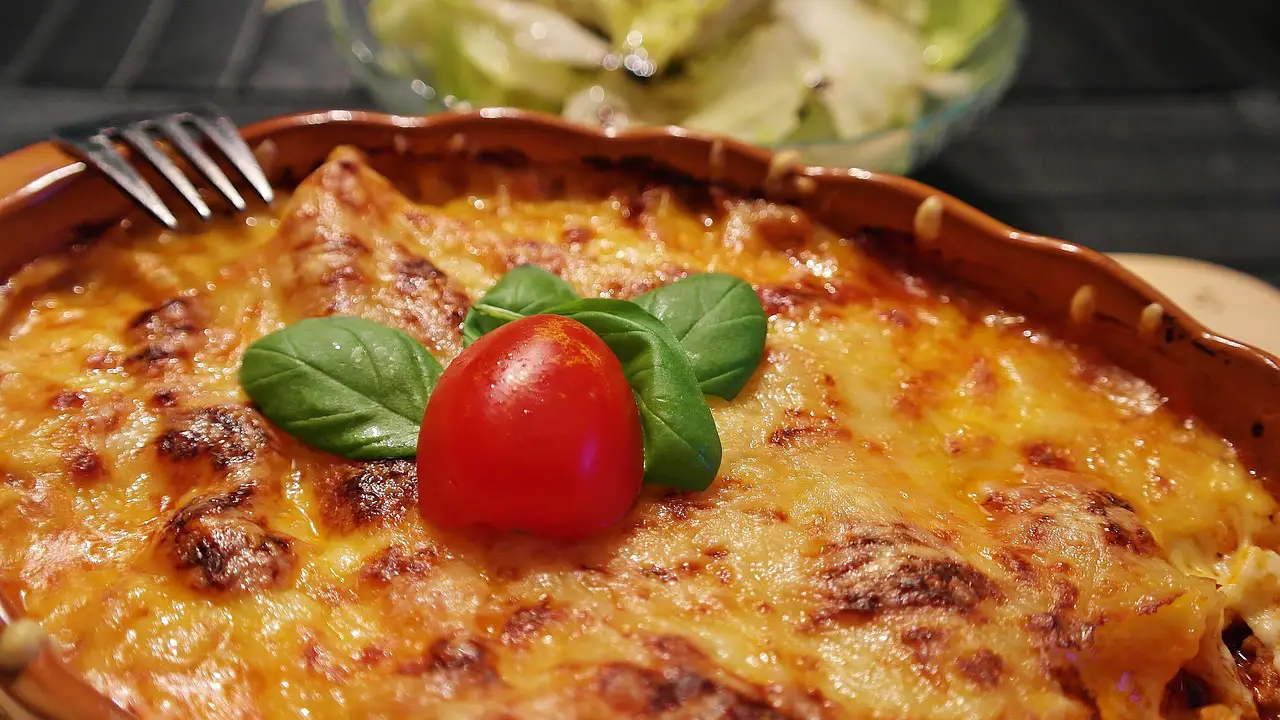
If you’re looking to make the perfect lasagna, there are plenty of resources available to help you out. From cookbooks to online tutorials, you’ll find everything you need to create a delicious and satisfying meal.
Cookbooks and Guides
One of the best ways to learn how to make lasagna is to consult a cookbook or guide. There are many options available, ranging from basic recipes to more complex variations. Some popular options include:
- “The Classic Italian Cookbook” by Marcella Hazan
- “The Silver Spoon” by Phaidon Press
- “The Complete Italian Cookbook” by Carla Capalbo
These cookbooks offer detailed instructions and helpful tips to ensure that your lasagna turns out perfectly every time. They also often include variations on the classic recipe, so you can experiment with different flavors and ingredients.
Online Tutorials and Blogs
Another great resource for aspiring lasagna chefs is the internet. There are countless blogs, tutorials, and videos available that can teach you everything you need to know about making lasagna. Some popular options include:
- Allrecipes.com
- Spendwithpennies.com
- Simplyrecipes.com
- Natashaskitchen.com
- Kristineskitchenblog.com
These websites offer step-by-step instructions, helpful tips, and even video tutorials to guide you through the process of making lasagna. They also often include user reviews and comments, so you can get feedback from others who have tried the recipes.
Whether you prefer to learn from a cookbook or an online tutorial, there are plenty of resources available to help you make the perfect lasagna. With a little practice and the right ingredients, you’ll be able to create a delicious and satisfying meal that your whole family will love.
Frequently Asked Questions

What are the essential ingredients for a classic lasagna?
A classic recipe typically includes lasagna noodles, tomato sauce, ground beef, ricotta cheese, mozzarella cheese, parmesan cheese, and Italian seasoning. However, there are variations of the recipe that include other ingredients like vegetables, sausage, or different types of cheese.
How do you properly layer a lasagna?
To properly layer a recipe, start by spreading a layer of sauce on the bottom of your baking dish. Then, add a layer of noodles, followed by a layer of ricotta cheese, a layer of mozzarella cheese, and a layer of parmesan cheese. Repeat these layers until you have used all of your ingredients, making sure to end with a layer of sauce and a layer of cheese on top. Bake according to your recipe’s instructions.
What is the difference between Italian lasagna and other variations?
Italian one typically uses a bolognese sauce made with ground beef, pork, or veal, while other variations may use a tomato sauce or a white sauce. Additionally, Italian lasagna often includes mozzarella cheese and parmesan cheese, while other variations may use different types of cheese or no cheese at all.
Can you substitute ricotta in a lasagna recipe, and if so, with what?
Yes, you can substitute ricotta cheese in this recipe with cottage cheese, mascarpone cheese, or even a mixture of cream cheese and sour cream. Each substitution will result in a slightly different taste and texture, so choose the one that best fits your preferences.
What are some tips for making a vegetarian lasagna that’s full of flavor?
To make a vegetarian recipe that’s full of flavor, try adding different types of vegetables like zucchini, eggplant, or mushrooms. You can also use a variety of cheeses like feta, goat cheese, or blue cheese to add depth to the dish. Additionally, using a flavorful tomato sauce or a pesto sauce can enhance the overall taste of the recipe.
How long should you bake a lasagna at 350°F (175°C), and should it be covered?
When baking it at 350°F (175°C), the cooking time will depend on whether you are using cooked or uncooked noodles. If using cooked noodles, bake for 30-45 minutes covered with foil, then uncover and bake for an additional 10-15 minutes until the cheese is golden brown. If using uncooked noodles, bake for 45-60 minutes covered with foil, then uncover and bake for an additional 10-15 minutes until the cheese is golden brown.
External Links
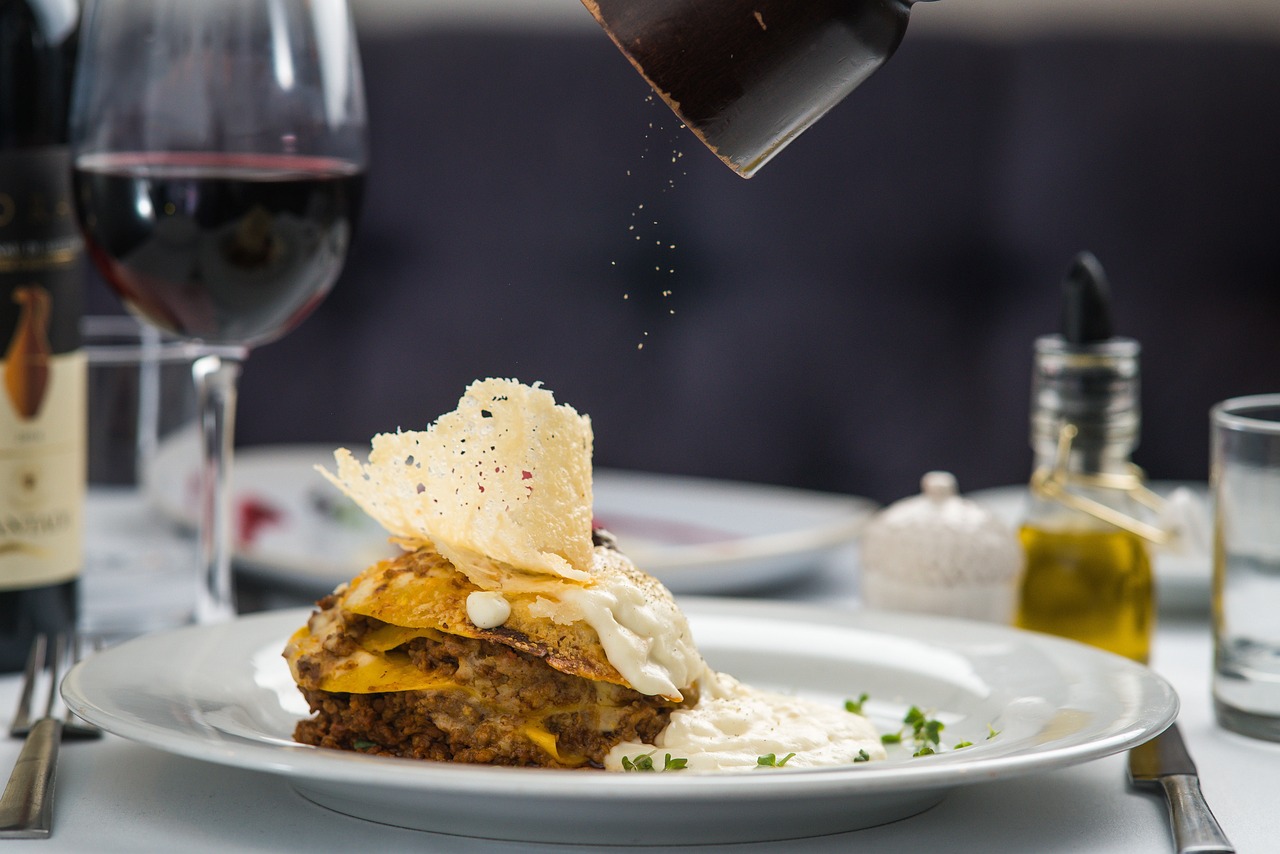
If you want to learn more about This recipe, there are plenty of resources available online. Here are a few external links that you might find helpful:
- Wikipedia’s page on lasagna provides a comprehensive overview of the dish’s history, ingredients, and preparation methods. You can also find information about different regional variations of This recipe from around the world.
- If you’re looking for a specific recipe to try at home, Once Upon a Chef’s Classic Lasagna is a great place to start. This recipe uses oven-ready noodles, a rich meat sauce, veggies, and plenty of cheese to create a comforting and familiar dish.
- For a more advanced recipe, check out Food Network Star Gabriele Bertaccini’s Holiday Lasagna from Scratch. This recipe is made entirely from scratch and includes homemade pasta, meat sauce, and bechamel sauce.
- If you’re interested in the technical side of preparation, Spaghetti Code is a great resource. This Wikipedia page explains how “spaghetti code” can be used as a pejorative term for unstructured and difficult-to-maintain source code, and how it can be caused by several factors such as volatile project requirements, lack of programming style rules, and software engineers with insufficient ability or experience.
These external links should provide you with a good starting point for learning more about This recipe. Whether you’re a beginner cook looking for a simple recipe or an experienced chef interested in the technical aspects of lasagna preparation, there’s something here for everyone.
More FAQs
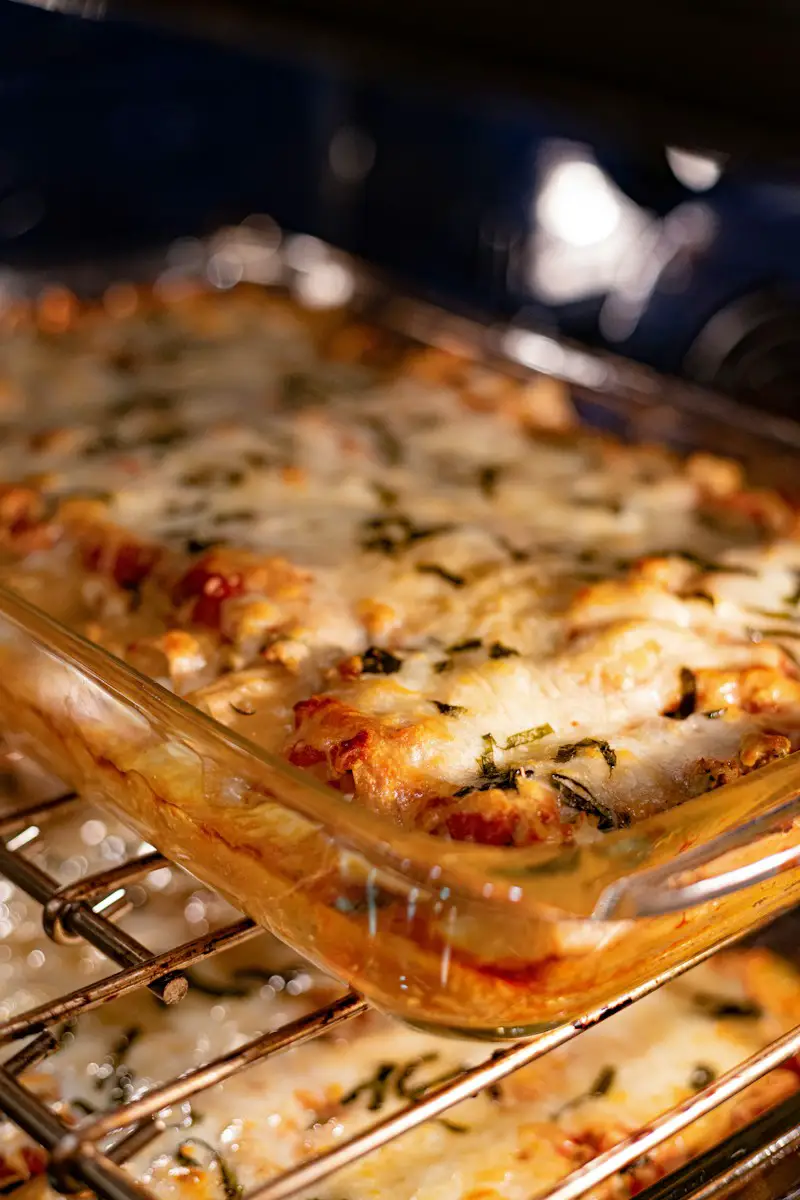
This recipe is a classic Italian dish that has been enjoyed by many people around the world. Here are some more frequently asked questions about it that you might be interested in.
What are some fun facts about lasagna?
- It is believed to have originated in Italy during the Middle Ages.
- It comes from the Greek word “lasanon,” which means “chamber pot.” This is because the first lasagnas were cooked in pots that resembled chamber pots.
- In some parts of Italy, It is traditionally eaten on Christmas Day.
- The largest lasagna ever made weighed over 5 tons and was over 500 feet long.
What is special about lasagna?
It is special because it is a dish that can be customized to your liking. You can use different kinds of meats, cheeses, and vegetables to create a unique lasagna that is perfect for you. Lasagna is also special because it is a comfort food that is perfect for sharing with friends and family.
What goes well with lasagna?
It is a hearty dish that pairs well with a variety of sides. Here are some ideas:
- Garlic bread
- Caesar salad
- Roasted vegetables
- Italian bread
- Red wine
Why is it called lasagna?
This recipe is called lasagna because it is made with lasagna noodles. Lasagna noodles are flat, wide noodles that are layered in the dish. The name “lasagna” is also used to refer to the dish itself.
Conclusion
You now have a good understanding of how to make a delicious recipe. Remember to use high-quality ingredients such as fresh vegetables, high-quality meats, and cheeses. Also, make sure to cook the recipe noodles al dente and drain them well before layering them in the dish.
When it comes to layering the recipe, start with a layer of sauce, followed by noodles, then cheese, and repeat until you reach the top. Be sure to end with a layer of cheese on top to get that crispy, golden-brown finish.
You can experiment with different types of sauce, meats, and cheeses to create your own unique recipe. Some popular variations include vegetarian one, chicken one, and seafood one.
Finally, don’t forget to let your recipe rest for at least 10-15 minutes after baking. This will allow the flavors to meld together and make it easier to slice and serve.
Follow these tips and you’ll be well on your way to making a mouth-watering lasagna that will impress your family and friends.
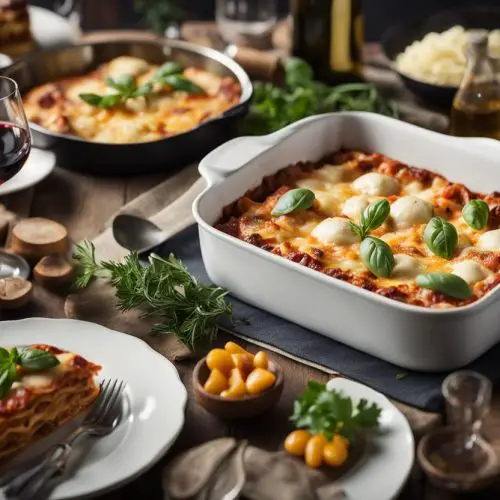
Classic Beef Lasagna
Ingredients
- 1 pound ground beef
- 1 onion, finely chopped
- 2 cloves garlic, minced
- 1 can (28 ounces) crushed tomatoes
- 2 cans (6 ounces each) tomato paste
- 2 cans (6 ounces each) tomato sauce
- 1/2 cup water
- 2 teaspoons sugar
- 2 teaspoons dried basil
- 1/2 teaspoon salt
- 1/4 teaspoon black pepper
- 3 cups ricotta cheese
- 2 eggs, beaten
- 3 cups shredded mozzarella cheese
- 3/4 cup grated Parmesan cheese
- 12 lasagna noodles, cooked and drained
- Fresh parsley, chopped (for garnish)
Instructions
- In a large skillet, brown the ground beef over medium heat. Add chopped onions and minced garlic, and cook until onions are softened.
- Stir in crushed tomatoes, tomato paste, tomato sauce, water, sugar, dried basil, salt, and black pepper. Simmer for 30 minutes, stirring occasionally.
- In a bowl, combine ricotta cheese and beaten eggs.
- Preheat the oven to 375°F (190°C).
- Spread a thin layer of the meat sauce in the bottom of a 9x13-inch baking dish. Place a layer of cooked lasagna noodles over the sauce.
- Spread half of the ricotta mixture over the noodles, followed by a third of the mozzarella and Parmesan cheeses. Repeat the layers, ending with a layer of meat sauce on top.
- Cover the baking dish with aluminum foil and bake for 25 minutes. Remove the foil and bake for an additional 25 minutes until bubbly and golden.
- Let the lasagna rest for 10 minutes before slicing. Garnish with chopped fresh parsley.

